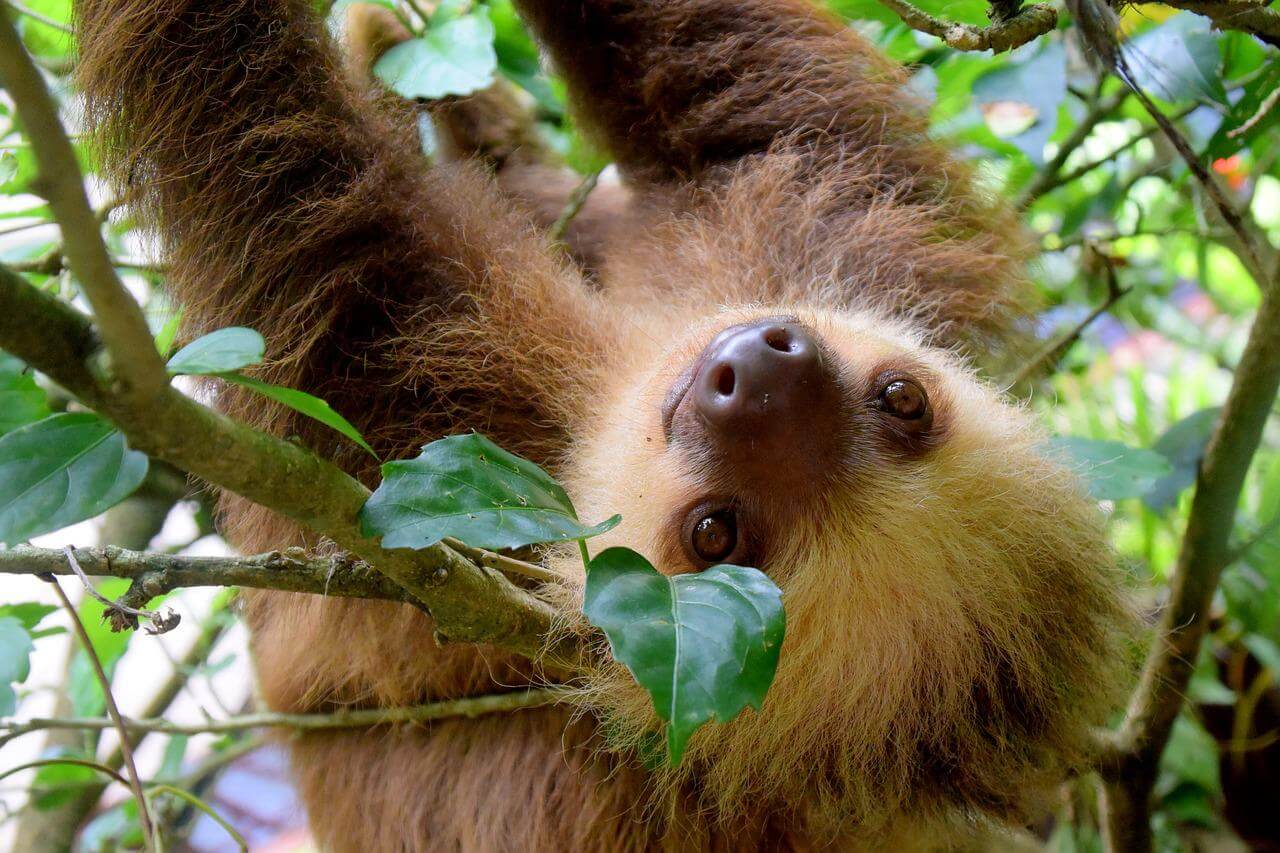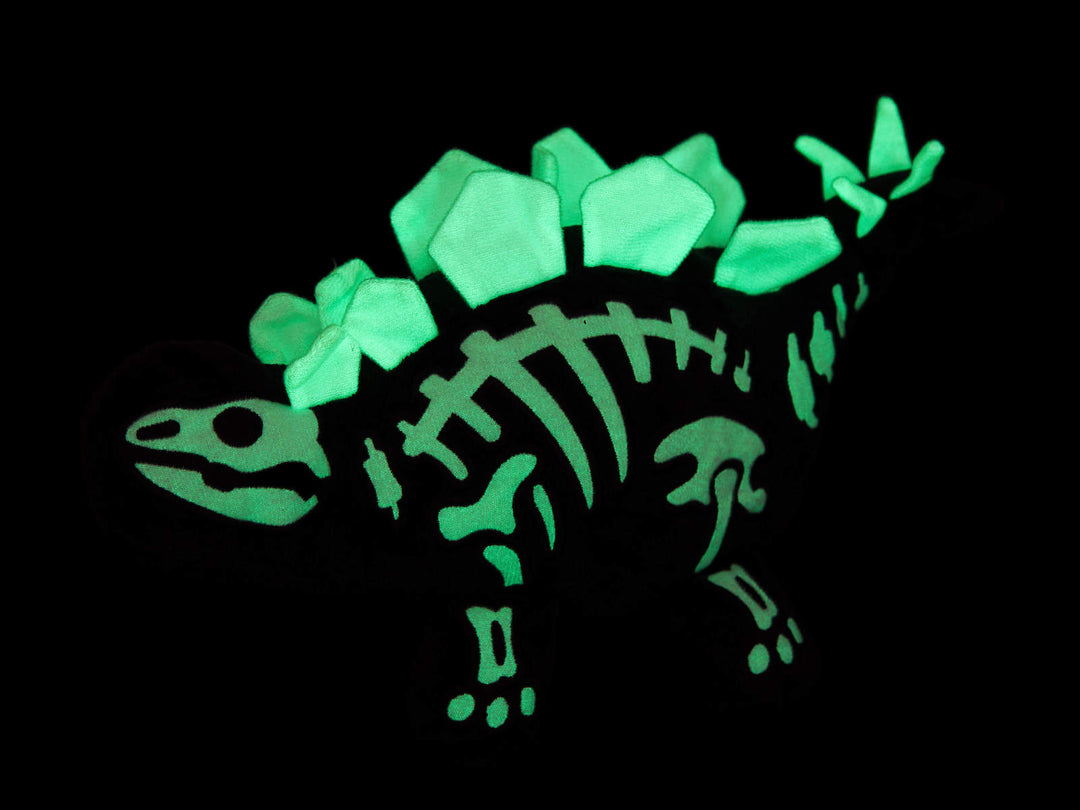Did you know that 80% of the world's terrestrial biodiversity lives in rainforests? Their ecosystem has extreme climates causing rainforest animals to inhabit one of the four environments, emergent layer, canopy, the understory, or rainforest floor. Extending from the highest point of treetops to the floor that only receives 1-2% of sunlight. While we won't list out EVERY animal that lives in the rainforest, here are 15 unique tropical rainforest animals that exist in the world from okapi to jaguars and tarsier.
1. Okapi

- Living in the dense tropical Ituri Forest of Central America, the Okapi is the closest relative to the giraffe. Its striped legs and brown hide help it 'disappear' into the forest making it the master of camouflage. The Okapi is a hybrid between a giraffe AND a zebra!
2. Sloth

- Also known as slow pokes…not literally but the average speed of a sloth is 6-13 feet per minute. These slow-moving creatures spend 90% of their time hanging upside down from tree branches. Similar to their movement, their digestion is slow as well. It can take a full month for a sloth to digest a single leaf, which makes sense why their energy is so low. Despite their slow nature, they can actually swim 3-4 times faster than they move on land.
3. Jaguar

- One of the most well-known tropical rainforest animals , the Jaguar is the largest of all cats in America and the third-largest cat in the world. They move quietly through the undergrowth of their rainforest floor with their padded paws. They’re also great climbers and like to rest in the trees, but unlike other cats, they enjoy the water!
4. Capybara

- Also known as the largest rodent in the world….yikes! Capybara is about 2 feet tall and weighs as much as 154 pounds. This curious creature is one of the most fascinating rainforest animals. They are great swimmers and can hold their breath for up to 5 minutes to hide from their predators! Capybaras have teeth that are continuously growing, but to make sure they don’t get too long, they constantly graze to wear them down.
5. Howler Monkey

- There are 15 species of howler monkeys that live in the rainforest of South and Central America. Howler monkeys live in groups called 'troops' from 6-15 monkeys. Their cries can be heard through 3 miles of rainforest
6. Scarlet Macaw

- One of the most known rainforest species, the macaw is a large parrot recognized for its bright red, blue, and yellow feathers. Their breaks are so powerful they can open hard nuts and seeds. They are also one of the few species that mate for life.
7. Gorilla

- The largest living primate on earth is the gorilla. Did you know they are the closest living relative of humans AND the gorilla has the most developed brain between chimpanzees, orangutans, and bonobos?
8. Emerald Tree Boa

- Don't worry this snake is non-venomous! They move quickly from tree to tree and can often be foiled wrapped around branches with their head resting in the middle. The Emerald tree boas are carnivorous animals and feed on small animals.
9.Lemur

- Found in the rainforests of Madagascar, lemurs are small primates. They are endemic, meaning they are found nowhere else on Earth, but Madagascar. Sadly, the ring-tailed lemur is endangered.
10. Tapir

- As large hoofed animals, tapirs have long, grasping snouts which means they can gran foliage while hunting for food. The other families that belong to the odd-toed ungulates found in the group are the horse family and the rhino.
11. Tarsier

- Tarsiers are small primates that are most recognized for their extremely large eyes and long tails. Their eyes are even larger than their brains. Tarsiers move around by leaping from tree to tree and are adapted for jumping. These little creatures are nocturnal animals and live mainly on a diet of insects.
12. Red Panda

- Another nocturnal species is most active during the night. The red panda is the size of a cat and an experienced climber, spending a lot of its time on branches. They spend most of their day eating up to 11 pounds of bamboo. But bamboo has very little nutritional value, that’s why they eat so much of it. Unfortunately, the red panda is an endangered species due to their habitat being lost every year to farming and development.
13. Tree Frog

- One of the many amphibians found in the rainforest and one of the many species of frogs. Tree frogs are known for their large, piercing red eyes, which help startle their predators enough to have time to escape. Tree frogs will be found on the underside of leaves. This is where they can rest during the day or they hide here when hunting to ambush their prey with their long sticky tongues.
14. Orangutan

- Members of the great ape family are just like us humans. Did you know the name 'orangutan' actually means 'man of the forest' in Malay. Orangutans are the world's largest tree-dwelling rainforest animals spending 95% of their lives in trees. Sadly, due to deforestation, all 3 species are now critically endangered.
15. Green Anaconda

- Known as one of the largest snakes in the world, the green anaconda reaches over 30 feet long, 12 inches in diameter, and can weigh over 550 pounds. Now THAT'S a big snake. The anaconda is also an excellent swimmer and can be found in lakes and rivers in the Amazon Rainforest.






Leave a comment